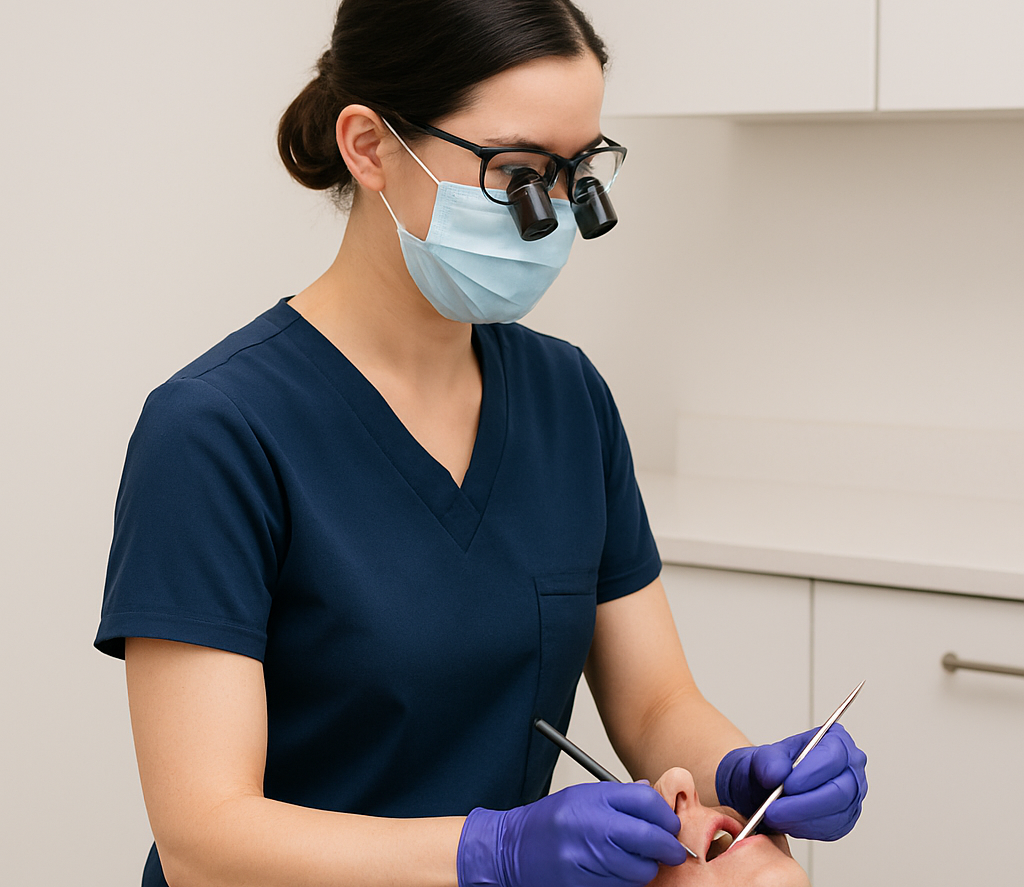
If you’ve spent any time scrolling through wellness content, you’ve probably heard about the pelvic floor—but what does it have to do with being a dental hygienist? More than you might think!
As dental professionals, we spend hours seated, leaning forward, and working in awkward positions. Over time, these postures can contribute to pelvic floor dysfunction, leading to issues like lower back pain, hip tightness, core instability, and even bladder concerns.
In this post, we’ll break down:
- What the pelvic floor is and why it’s important for dental hygienists
- How poor posture and prolonged sitting affect it
- Simple exercises (beyond Kegels!) to keep your pelvic floor strong and pain-free
What Is the Pelvic Floor?
Your pelvic floor is a group of muscles and connective tissues (fascia) that form the base of your core. These muscles stretch like a hammock from your pubic bone to your tailbone and side to side between your sit bones. They help support your bladder, bowels, and reproductive organs while playing a major role in core stability.
Think of your core like a canister:
Top = The diaphragm
Front = Abdominal muscles
Back = Lower back muscles
Bottom = Pelvic floor muscles
When everything works together, your body feels strong, stable, and pain-free. But when the pelvic floor is too weak or too tight, problems can occur—especially for dental hygienists. (We sit, lean, and hold tension in our hips all day!)
Why Dental Hygienists Should Care About Their Pelvic Floor
A well-functioning pelvic floor helps with:
✔ Core stability – Supports your spine and posture for long clinical days
✔ Lower back and hip health – Prevents pain caused by prolonged sitting and leaning
✔ Bladder control – Reduces urgency and leakage (and let’s be honest, who has time for bathroom breaks?!)
✔ Circulation and mobility – Keeps blood flowing to your hips and legs
As a hygienist, you’re constantly using your core and hips for stability. If your pelvic floor is overactive (too tight) or underactive (too weak), it can lead to discomfort, pain, and dysfunction.
Common Pelvic Floor Problems in Hygienists
Because of our posture and clinical demands, dental hygienists are at higher risk for:
Tight Pelvic Floor Muscles → Caused by constant tension, poor posture, and stress
Symptoms: Lower back pain, hip tightness, constipation
Weak Pelvic Floor Muscles → From prolonged sitting, lack of movement, and less core activation
Symptoms: Poor core engagement, instability, bladder urgency
Pelvic Floor Imbalances → A mix of tightness and weakness leading to pain and dysfunction
The good news? You can restore balance with stretching, strengthening, and myofascial release techniques.
Beyond Kegels: 5 Pelvic Floor Stretches & Exercises for Dental Hygienists
While Kegels can help, they’re not the only solution—especially if your pelvic floor is too tight rather than weak. Here are five stretches to release tension and improve function:
1. Child’s Pose (Great for pelvic floor relaxation)
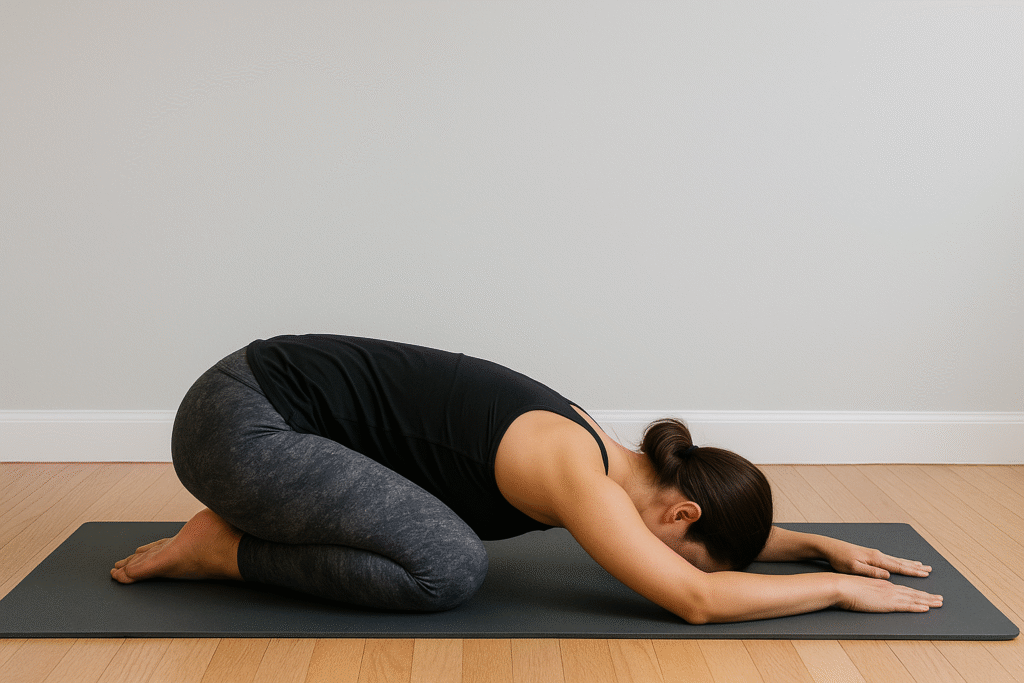
- Start by kneeling on the floor or a mat
- Sit back on your heels
- Spread your knees apart to where it’s comfortable
- Slowly walk your hands forward, lowering your upper body toward the ground
- Allow your forehead to rest on the mat and extend your arms in front of you
- Take deep breaths and relax into the stretch, feeling a gentle opening in the pelvic area
- Hold the position for 30-90 seconds, or as long as comfortable
- To release, gently walk your hands back toward your body and slowly come back up to a kneeling position
💡 Modification: A pillow or yoga block can support your hips/glutes if unable to sit on the heels, as well as the chest and forehead if the floor is too intense of a stretch.
2. Butterfly Stretch (Opens hips and inner thighs)
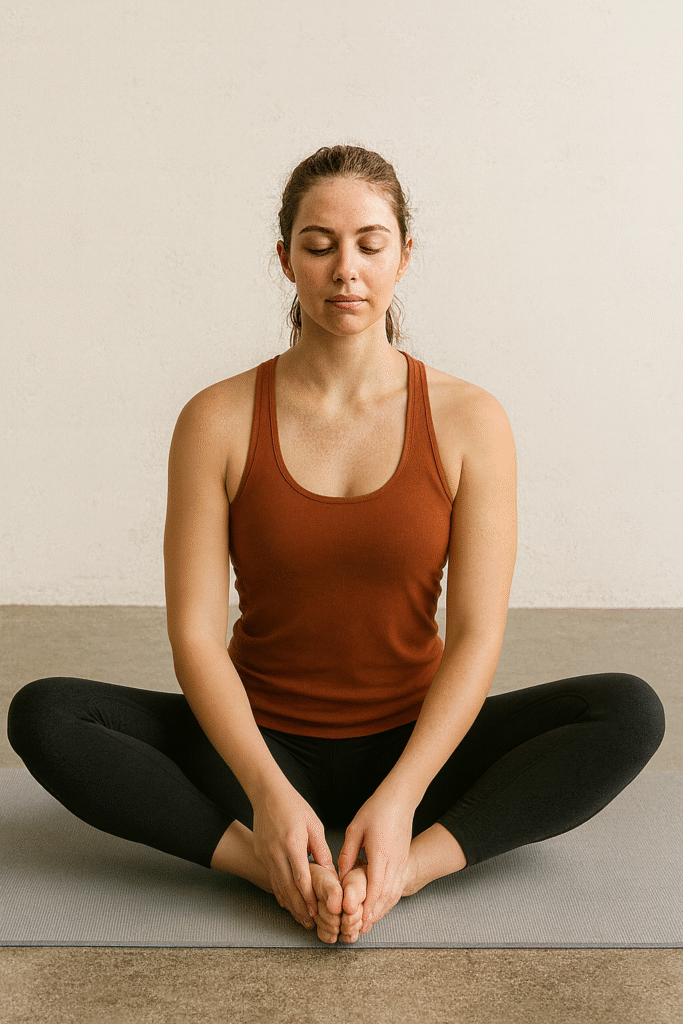
- Sit on the floor or a mat with your knees bent, feet flat on the floor
- Let the knees gently fall open to where it’s comfortable—never forcing your body beyond where it wants to go!
- Bring the soles of your feet together
- Hold onto your ankles or feet with your hands
- Lengthen through your spine and sit up tall
- If it’s comfortable, lean forward
- Relax and breathe deeply, feeling a gentle stretch in the inner thighs and pelvic area
- Hold for 30-90 seconds
- To release, slowly guide the knees back to the original position with your hands
💡 Modification: A cushion or yoga block can be placed under the seat to elevate the hips for better alignment if the spine is rounded. Blocks or pillows can be placed under the knees for support.
3. Happy Baby Pose (Releases pelvic floor & lower back)
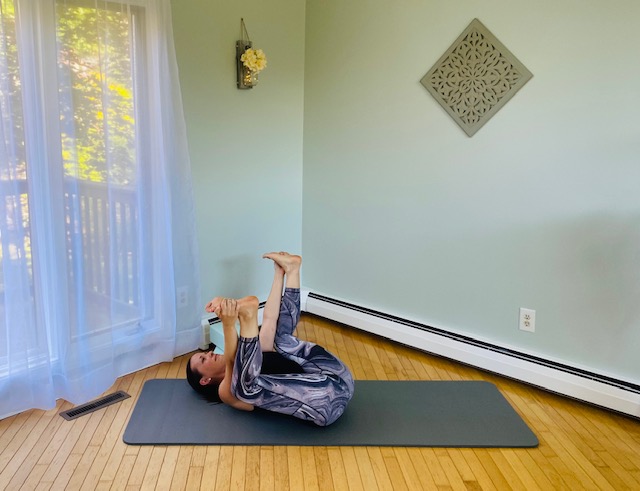
- Lie on your back
- Bend your knees and grab the outside edges of your feet
- Gently pull your knees toward your armpits while keeping your lower back on the ground
- Relax and breathe deeply, feeling a gentle stretch in the inner thighs, hamstrings, lower back, and pelvic area
- Hold for 30-90 seconds
💡 Modification: Use a stretching strap if you can’t reach your feet.
4. Supine Figure 4 Stretch (Targets tight hips, glutes, & lower back)
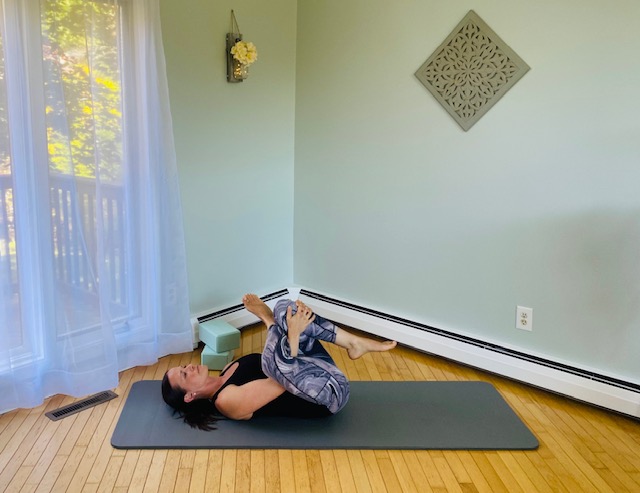
- Lie on your back with your knees bent, feet flat on the floor
- Cross your right ankle over your left knee, creating a figure 4 shape
- Gently press your right knee away from your body to feel a stretch in the hip and pelvic area
- To deepen the stretch, bring the supporting leg closer to the glutes or gently pull the supporting leg toward the chest
- Hold for 30-90 seconds
- Repeat on the other side
💡 Tip: Keep the top foot flexed to support the knee joint. If you feel knee discomfort, adjust your position or move the supporting leg further away.
5. Deep Squat Hold (Strengthens & stretches the pelvic floor)
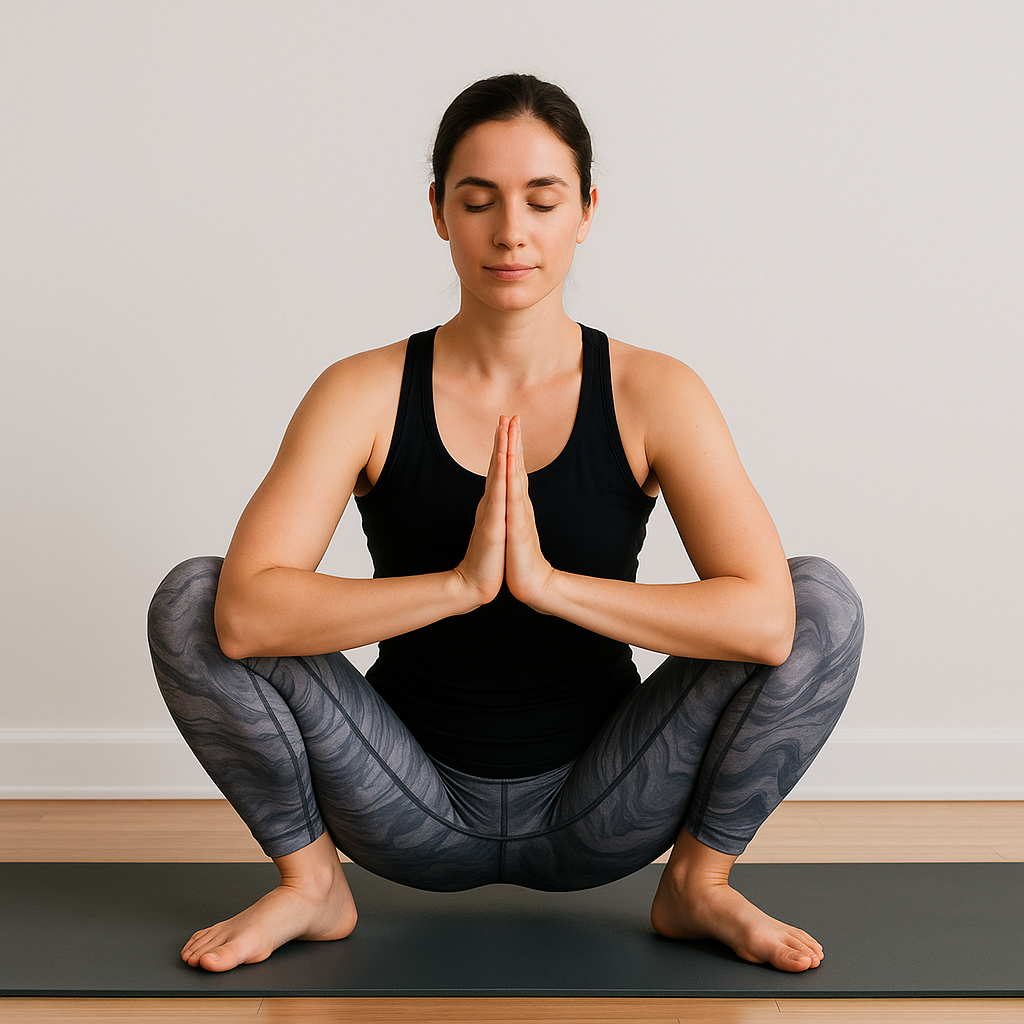
- Stand with feet a little wider than hip-width, feet turned out slightly
- Slowly lower into a deep squat, keeping your heels on the ground
- Use your elbows to gently press your knees outward
- Hold for 30-90 seconds
💡 Modification: Place a rolled-up towel under your heels if they lift or sit on a yoga block for support.
Strengthening Your Pelvic Floor
Once you’ve released tightness, it’s important to strengthen the pelvic floor in combination with your core.
Bridge Pose (Glute, core, & pelvic floor activation)
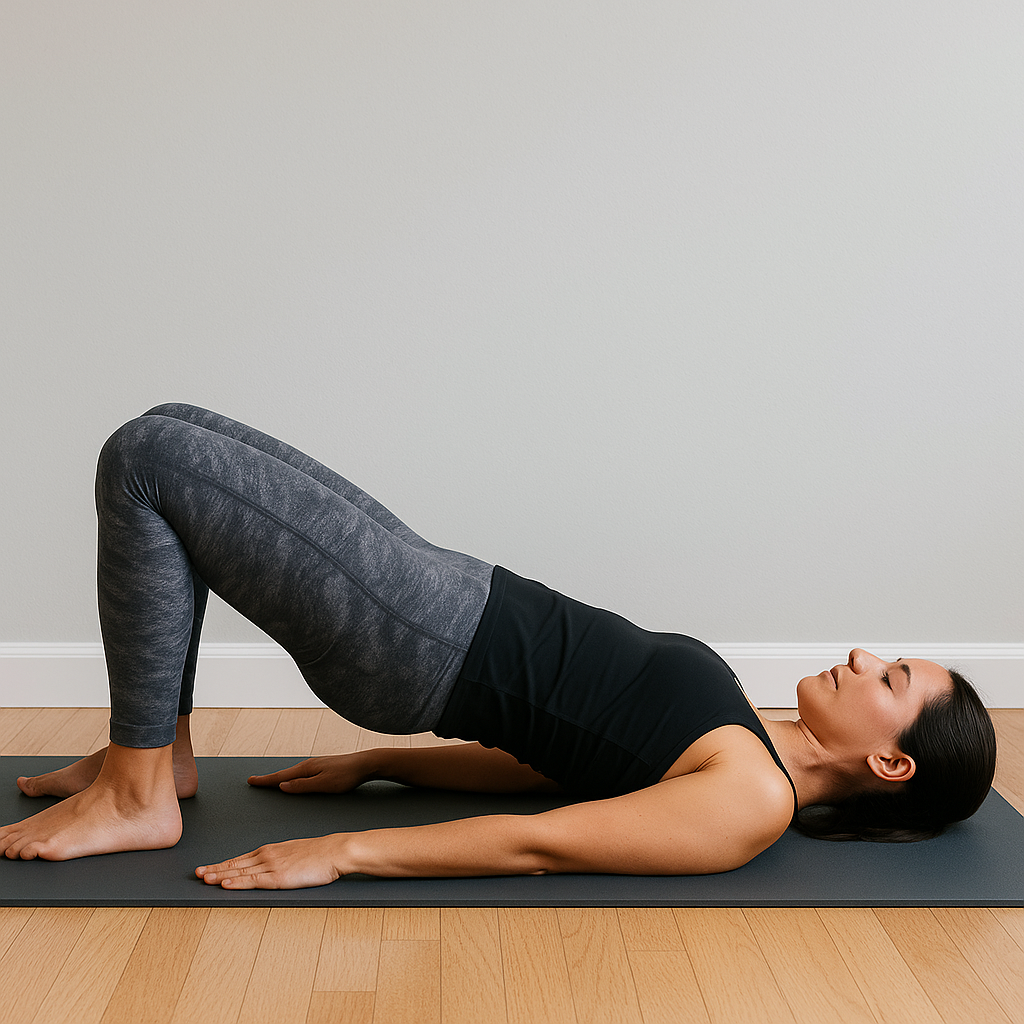
- Lie on your back with your knees bent and feet flat on the floor, hip-width apart
- Place your arms alongside your body with palms facing down
- Press through your feet and engage your glutes as you lift your hips off the ground
- Keep your thighs parallel and your knees aligned with your ankles
- Lengthen through your tailbone and engage your core
- Hold for 30-90 seconds, breathing deeply into the diaphragm
- Repeat up to 3x
💡 Tip: Place a yoga block or a ball between your knees and squeeze for extra activation.
Listen to your body and modify the exercises as needed. Maintain steady breathing and avoid straining. If you experience any discomfort or pain, stop and consult with a healthcare professional.
The Takeaway
Your pelvic floor goes well beyond just bladder control. Incorporating a combination of strengthening, stretching, and myofascial release exercises can help you maintain a healthy pelvic floor.
Your body works hard for your patients every day—take time to care for it too! 💙



